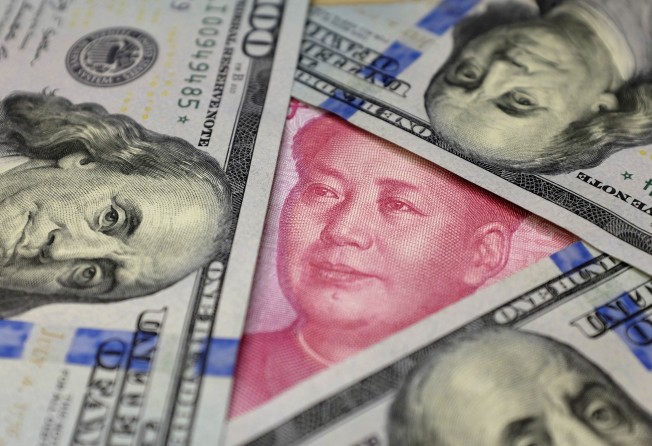PBOC adjusts formula for yuan fixing, sparking rise in currency
Move aimed at warding off potential capital outflows from impending rise in US interest rates

The People’s Bank of China will adjust the formula for calculating its daily yuan reference rate, in an apparent aim to ward off potential capital outflows resulting from the United States Federal Reserve’s impending rise in interest rates.
A “counter-cyclical adjustment factor” would be added to the closing exchange rate and to the basket of currencies for calculating the yuan’s daily fixing, or the mid-point rate from which the yuan is allowed to trade by up to 2 per cent, Bloomberg reported, citing unnamed sources as saying, without clarifying details.
“The counter-cyclical adjustment factor is aimed at reducing the herd behaviour in the foreign exchange market and guide the focus back to economic fundamentals,” the central bank said on its website on Friday.
The commercial banks that contributed daily quotes for the setting of the yuan reference rate would apply the new revision shortly, Bloomberg said.
Offshore, the yuan surged 0.47 per cent, the most since March 15, to 6.8161 against the US dollar on Friday, the strongest level since February.
Onshore, the yuan rose to as high as 6.8465 to the dollar before settling at 6.8525, the strongest since February and above the day’s reference rate at 6.8698.
The new mechanism was expected to reduce the influence of the yuan closing price, which might reduce market volatility, although it was not clear how the “counter-cyclical adjustment factor” was determined, analysts said.
“The new component weakens the significance of the daily closing price against the dollar in the calculation, especially when the dollar rebounds after weakening recently,” said Jimmy Zhu, the chief strategist at Fullerton Markets.
“At the same time, the central bank has been allowing the yuan to gradually fall against a basket of currencies, gradually releasing depreciation pressure there.”
ANZ said in a report the new fixing mechanism was less transparent and introduced greater unpredictability in the fixing.
The PBOC has been setting the yuan reference rate with a strong bias in the past month or so, but the spot rate has generally kept trading at a weaker level than the fix, suggesting that onshore market demand for dollars remained strong and pointing to lingering yuan depreciation pressure.
The adjustment is the second to the setting of the daily reference midpoint fixing this year after it reduced the reference period of yuan trading against its trade-weighted basket to 15 hours (from 4.30pm to 7.30am) from 24 hours.